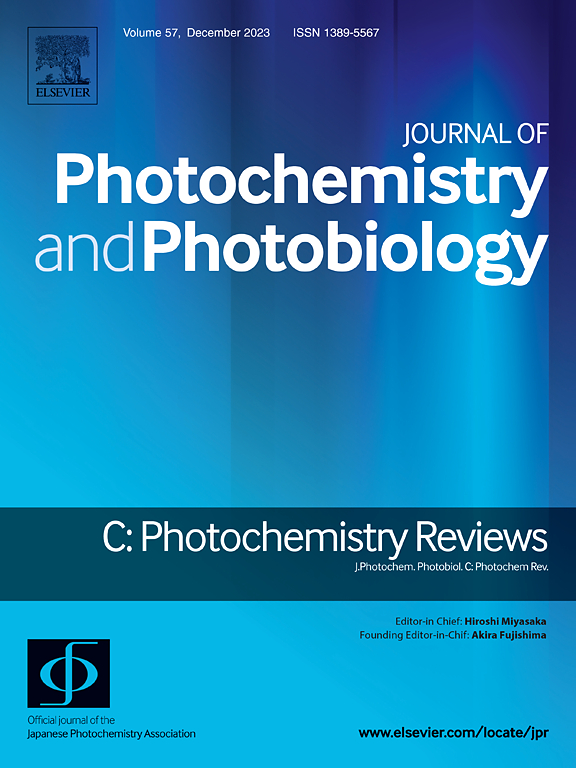光催化水分离反应:从半导体到 MOF 的途径
IF 13.1
1区 化学
Q1 CHEMISTRY, PHYSICAL
Journal of Photochemistry and Photobiology C: Photochemistry Reviews
Pub Date : 2024-11-10
DOI:10.1016/j.jphotochemrev.2024.100680
引用次数: 0
摘要
鉴于全球能源需求的不断增长,光催化水分离技术已成为可持续和持久能源的一条大有可为的途径。然而,寻找适合工业规模应用的最佳光催化剂仍然是一项艰巨的挑战。寻找最佳光催化剂用于水分离反应的过程十分漫长,而且仍在继续。虽然这一探索始于使用基于金属氧化物的无机半导体,如二氧化钛,但许多新的、有前途的材料,如金属有机框架(MOFs),已开始吸引科学界的关注。然而,要想提高任何光催化剂的效率,首先必须了解反应是如何进行的,换句话说,必须了解反应机理。以下综述旨在研究和分析可用于阐明反应机理的不同实验技术,这些技术涵盖了水分离的两个半反应:氢进化反应(HER)、氧进化反应(OER)和整体水分离(OWS)。这项工作从太阳照射下光催化 OWS 的基本原理入手,随后对不同的基于 MOF 的光催化剂进行了系统评估,并根据其成分中的特定金属离子对其进行了分类,以便于进行标准化比较。然后,利用各种光谱技术详细介绍了光催化剂的机理研究。虽然重点分析了 MOFs 的机理研究,但也探讨了其他重要的光催化剂对应物,因为它们有助于巩固研究新材料的基础。此外,通过比较传统光催化剂(如金属氧化物半导体)和 MOFs 等新型材料的研究结果,我们试图展示在阐明反应机理方面可以提取的大量信息。这种系统化的方法旨在帮助更好地进行机理研究,并为 HER、OER 和 OWS 设计下一代光催化剂。本文章由计算机程序翻译,如有差异,请以英文原文为准。
Photocatalytic water splitting reaction: The pathway from semiconductors to MOFs
In light of the ever-growing global energy demand, photocatalytic water splitting has emerged as a promising avenue for sustainable and persistent energy sources. However, the quest for an optimal photocatalyst suitable for industrial-scale applications remains a strenuous challenge. The journey to identify the optimal photocatalyst for the water splitting reaction has been extensive and remains ongoing. While the search started with the use of inorganic semiconductors based on metal oxides, such as TiO2, many new and promising materials, such as Metal-Organic Frameworks (MOFs), have started to attract the attention of the scientific community. However, in order to be able to improve the efficiency of any photocatalyst, it is important to first understand how the reaction is taking place, in other words, it results imperative to understand the reaction mechanism. The aim of the following review is to study and analyze different experimental techniques that can be used for the elucidation of the reaction mechanism covering both water splitting’s half reactions: hydrogen evolution reaction (HER), oxygen evolution reaction (OER) and overall water splitting (OWS). This work starts with the fundamentals of photocatalytic OWS under solar irradiation, followed by the systematical evaluation of distinct MOF-based photocatalysts, classifying them based on the specific metal ion in their composition which facilitates standardized comparisons. The mechanistic investigation of photocatalysts is then detailed, employing various spectroscopic techniques. While a higher focus has been given to the analysis of the mechanistic study on MOFs, other important photocatalysts counterparts are also explored, as they have helped to cement the bases in which new materials can be studied. Furthermore, by comparing results obtained for conventional photocatalysts (e.g., metal oxide semiconductors) with those obtained for newer materials like MOFs, we attempt to show the great amount of information that can be extracted for the elucidation of reaction mechanisms. This systematic approach aims to help better investigate the mechanistic study and designing the next generation of photocatalysts for HER, OER, and OWS.
求助全文
通过发布文献求助,成功后即可免费获取论文全文。
去求助
来源期刊
CiteScore
21.90
自引率
0.70%
发文量
36
审稿时长
47 days
期刊介绍:
The Journal of Photochemistry and Photobiology C: Photochemistry Reviews, published by Elsevier, is the official journal of the Japanese Photochemistry Association. It serves as a platform for scientists across various fields of photochemistry to communicate and collaborate, aiming to foster new interdisciplinary research areas. The journal covers a wide scope, including fundamental molecular photochemistry, organic and inorganic photochemistry, photoelectrochemistry, photocatalysis, solar energy conversion, photobiology, and more. It provides a forum for discussing advancements and promoting collaboration in the field of photochemistry.

 求助内容:
求助内容: 应助结果提醒方式:
应助结果提醒方式:


